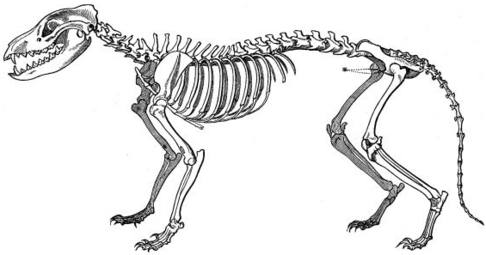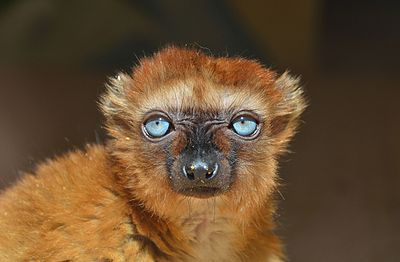Convergent evolution
| Part of a series on |
| Evolutionary biology |
|---|
 |
Convergent evolution is the independent
The opposite of convergence is divergent evolution, where related species evolve different traits. Convergent evolution is similar to parallel evolution, which occurs when two independent species evolve in the same direction and thus independently acquire similar characteristics; for instance, gliding frogs have evolved in parallel from multiple types of tree frog.
Many instances of convergent evolution are known in
.Overview
In morphology, analogous traits arise when different species live in similar ways and/or a similar environment, and so face the same environmental factors. When occupying similar ecological niches (that is, a distinctive way of life) similar problems can lead to similar solutions.[1][2][3] The British anatomist Richard Owen was the first to identify the fundamental difference between analogies and homologies.[4]
In biochemistry, physical and chemical constraints on
In his 1989 book
Distinctions
Cladistics
In cladistics, a homoplasy is a trait shared by two or more
Atavism
In some cases, it is difficult to tell whether a trait has been lost and then re-evolved convergently, or whether a gene has simply been switched off and then re-enabled later. Such a re-emerged trait is called an atavism. From a mathematical standpoint, an unused gene (selectively neutral) has a steadily decreasing probability of retaining potential functionality over time. The time scale of this process varies greatly in different phylogenies; in mammals and birds, there is a reasonable probability of remaining in the genome in a potentially functional state for around 6 million years.[12]
Parallel vs. convergent evolution

When two species are similar in a particular character, evolution is defined as parallel if the ancestors were also similar, and convergent if they were not.[b] Some scientists have argued that there is a continuum between parallel and convergent evolution,[13][14] while others maintain that despite some overlap, there are still important distinctions between the two.[15][16]
When the ancestral forms are unspecified or unknown, or the range of traits considered is not clearly specified, the distinction between parallel and convergent evolution becomes more subjective. For instance, the striking example of similar placental and marsupial forms is described by Richard Dawkins in The Blind Watchmaker as a case of convergent evolution, because mammals on each continent had a long evolutionary history prior to the extinction of the dinosaurs under which to accumulate relevant differences.[17]
At molecular level
Proteins
Protease active sites
The
Serine and cysteine proteases use different amino acid functional groups (alcohol or thiol) as a
Cone snail and fish insulin
Conus geographus produces a distinct form of insulin that is more similar to fish insulin protein sequences than to insulin from more closely related molluscs, suggesting convergent evolution,[20] though with the possibility of horizontal gene transfer.[21]
Ferrous iron uptake via protein transporters in land plants and chlorophytes
Distant homologues of the metal ion transporters
Na+,K+-ATPase and Insect resistance to cardiotonic steroids
Many examples of convergent evolution exist in insects in terms of developing resistance at a molecular level to toxins. One well-characterized example is the evolution of resistance to cardiotonic steroids (CTSs) via amino acid substitutions at well-defined positions of the α-subunit of
Nucleic acids
Convergence occurs at the level of
In animal morphology
Bodyplans
Swimming animals including
The marsupial fauna of Australia and the placental mammals of the Old World have several strikingly similar forms, developed in two clades, isolated from each other.
Echolocation
As a sensory adaptation,
Electric fishes
The Gymnotiformes of South America and the Mormyridae of Africa independently evolved passive electroreception (around 119 and 110 million years ago, respectively). Around 20 million years after acquiring that ability, both groups evolved active electrogenesis, producing weak electric fields to help them detect prey.[39]
- Convergence of weakly electric fishes
-
Gymnotiform electrolocation waveform
-
A gymnotiform electric fish of South America
-
A mormyrid electric fish of Africa
-
Mormyrid electrolocation waveform
Eyes

One of the best-known examples of convergent evolution is the camera eye of cephalopods (such as squid and octopus), vertebrates (including mammals) and cnidaria (such as jellyfish).[41] Their last common ancestor had at most a simple photoreceptive spot, but a range of processes led to the progressive refinement of camera eyes—with one sharp difference: the cephalopod eye is "wired" in the opposite direction, with blood and nerve vessels entering from the back of the retina, rather than the front as in vertebrates. As a result, cephalopods lack a blind spot.[7]
Flight
Flying squirrels and sugar gliders are much alike in their body plans, with gliding wings stretched between their limbs, but flying squirrels are placental mammals while sugar gliders are marsupials, widely separated within the mammal lineage from the placentals.[45]
Hummingbird hawk-moths and hummingbirds have evolved similar flight and feeding patterns.[46]
Insect mouthparts
Insect mouthparts show many examples of convergent evolution. The mouthparts of different insect groups consist of a set of
Opposable thumbs
Primates
out of Africa , different genes were involved in European (left) and East Asian (right) lineages.
| ||
Convergent evolution in humans includes blue eye colour and light skin colour.
| Humans | Lemurs | ||
|---|---|---|---|
| Despite the similarity of appearance, the genetic basis of blue eyes is different in humans and lemurs. | |||
In plants

The annual life-cycle
While most plant species are
Carbon fixation
Fruits
Seed dispersal by ants (myrmecochory) has evolved independently more than 100 times, and is present in more than 11,000 plant species. It is one of the most dramatic examples of convergent evolution in biology.[66]
Carnivory

Methods of inference
Phylogenetic reconstruction and ancestral state reconstruction proceed by assuming that evolution has occurred without convergence. Convergent patterns may, however, appear at higher levels in a phylogenetic reconstruction, and are sometimes explicitly sought by investigators. The methods applied to infer convergent evolution depend on whether pattern-based or process-based convergence is expected. Pattern-based convergence is the broader term, for when two or more lineages independently evolve patterns of similar traits. Process-based convergence is when the convergence is due to similar forces of natural selection.[68]
Pattern-based measures
Earlier methods for measuring convergence incorporate ratios of phenotypic and
Distance-based measures assess the degree of similarity between lineages over time. Frequency-based measures assess the number of lineages that have evolved in a particular trait space.[68]
Process-based measures
Methods to infer process-based convergence fit models of selection to a phylogeny and continuous trait data to determine whether the same selective forces have acted upon lineages. This uses the
See also
- Incomplete lineage sorting – Characteristic of phylogenetic analysis: the presence of multiple alleles in ancestral populations might lead to the impression that convergent evolution has occurred.
- Carcinisation – Evolution of crustaceans into crab-like forms
- Morphology (biology) – Study of external forms and structures of organisms
- Iterative evolution– The repeated evolution of a specific trait or body plan from the same ancestral lineage at different points in time.
- Elvis taxon – Misidentification of later taxon superficially resembling earlier extinct taxon
- Breeding back – A form of selective breeding to recreate the traits of an extinct species, but the genome will differ from the original species.
- Orthogenesis (contrastable with convergent evolution; involves teleology)
Notes
- ^ However, evolutionary developmental biology has identified deep homology between insect and mammal body plans, to the surprise of many biologists.
- ^ However, all organisms share a common ancestor more or less recently, so the question of how far back to look in evolutionary time and how similar the ancestors need to be for one to consider parallel evolution to have taken place is not entirely resolved within evolutionary biology.
- pre-adaptation or exaptation.
References
- ISBN 978-0-643-09391-1. Archivedfrom the original on 15 February 2017. Retrieved 23 January 2017.
evolutionary convergence, which, quoting .. Simon Conway Morris .. is the 'recurring tendency of biological organization to arrive at the same "solution" to a particular "need". .. the 'Tasmanian tiger' .. looked and behaved like a wolf and occupied a similar ecological niche, but was in fact a marsupial not a placental mammal.
- ISBN 978-1-4425-3176-5.
- ^ a b "Homologies and analogies". University of California Berkeley. Archived from the original on 19 November 2016. Retrieved 10 January 2017.
- ISBN 978-82-92622-53-7.
- ^ PMID 23382230.
- ISBN 978-0-09-174271-3.
- ^ OCLC 156902715.
- PMID 23530223.
- ISBN 978-0-87893-494-2.
- ISBN 978-0-19-512235-0.
- ISBN 978-0-08-053411-4. Archivedfrom the original on 14 February 2017. Retrieved 21 January 2017.
- PMID 14728776.
- PMID 18022278.
- S2CID 235460165.
- .
- PMID 9159930.
- ISBN 978-0-393-31570-7.
- PMID 9787641.
- PMID 18824507.
- PMID 25605914.
- PMID 6787049.
- PMID 36626937.
- ^ PMID 23019645.
- ^ Dobler, S., Dalla, S., Wagschal, V., & Agrawal, A. A. (2012). Community-wide convergent evolution in insect adaptation to toxic cardenolides by substitutions in the Na,K-ATPase. Proceedings of the National Academy of Sciences, 109(32), 13040–13045. https://doi.org/10.1073/pnas.1202111109
- ^ PMID 31154978.
- PMID 24951728.
- PMID 25621460.
- PMID 28096377.
- PMID 29230027.
- PMID 29035697.
- S2CID 96435050.
- ^ "How do analogies evolve?". University of California Berkeley. Archived from the original on 2 April 2017. Retrieved 26 January 2017.
- ISBN 978-1-84076-623-3. Archivedfrom the original on 15 February 2017. Retrieved 26 January 2017.
- ^ Helm, R. R. (18 November 2015). "Meet Phylliroe: the sea slug that looks and swims like a fish". Deep Sea News. Archived from the original on 26 July 2019. Retrieved 26 July 2019.
- ^ Ballance, Lisa (2016). "The Marine Environment as a Selective Force for Secondary Marine Forms" (PDF). UCSD. Archived (PDF) from the original on 2 February 2017. Retrieved 19 September 2019.
- PMID 7877495.
- .
- S2CID 16117978.
- PMID 22606250.
- ISBN 978-0-17-448019-8. Archivedfrom the original on 12 September 2016.
- PMID 18577593.
- ^ "Plant and Animal Evolution". University of Waikato. Archived from the original on 18 March 2017. Retrieved 10 January 2017.
- PMID 27335420.
- ISBN 978-0-19-999679-7. Archivedfrom the original on 14 February 2017. Retrieved 21 January 2017.
- ^ "Analogy: Squirrels and Sugar Gliders". University of California Berkeley. Archived from the original on 27 January 2017. Retrieved 10 January 2017.
- ^
Herrera, Carlos M. (1992). "Activity pattern and thermal biology of a day-flying hawkmoth (Macroglossum stellatarum) under Mediterranean summer conditions". Ecological Entomology. 17 (1): 52–56. S2CID 85320151.
- .
- PMID 21115131.
- S2CID 9194699.
- ^ "When is a thumb a thumb?". Understanding Evolution. Archived from the original on 16 October 2015. Retrieved 14 August 2015.
- ^ PMID 20221248.
- PMID 23640739.
- ^ S2CID 260332117.
- S2CID 225237602.
- PMID 36684797.
- PMID 37194450.
- PMID 24082995.
- PMID 16553316.
- ISBN 978-0-12-614440-6.
- from the original on 1 April 2019. Retrieved 29 December 2018.
- ISBN 978-0-12-614440-6.
- S2CID 83564261.
- PMID 23236986.)
{{cite journal}}: CS1 maint: multiple names: authors list (link - ISBN 978-1-84593-149-0. Archivedfrom the original on 1 April 2019. Retrieved 17 December 2016.
- doi:10.3724/SP.J.1002.2008.08039 (inactive 31 January 2024). Archived from the original (PDF) on 18 July 2013.)
{{cite journal}}: CS1 maint: DOI inactive as of January 2024 (link - .
- PMID 28812732.
- ^ S2CID 3161530.
- PMID 18321532.
- PMID 23159601.
- .
- S2CID 86382470.
Further reading
- Losos, Jonathan B. (2017). Improbable Destinies: Fate, Chance, and the Future of Evolution. Riverhead Books. ISBN 978-0399184925.
External links
 Media related to Convergent evolution at Wikimedia Commons
Media related to Convergent evolution at Wikimedia Commons














